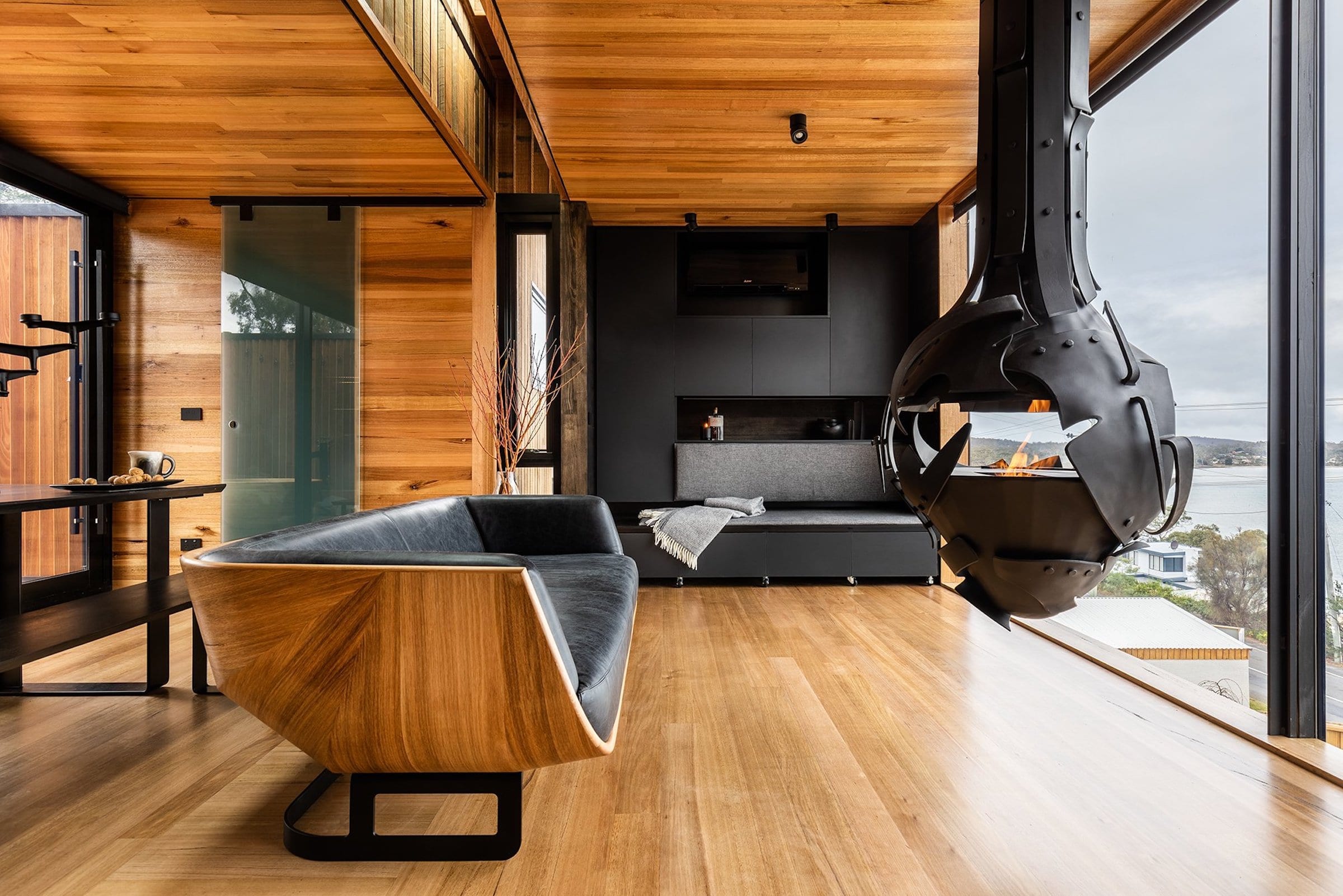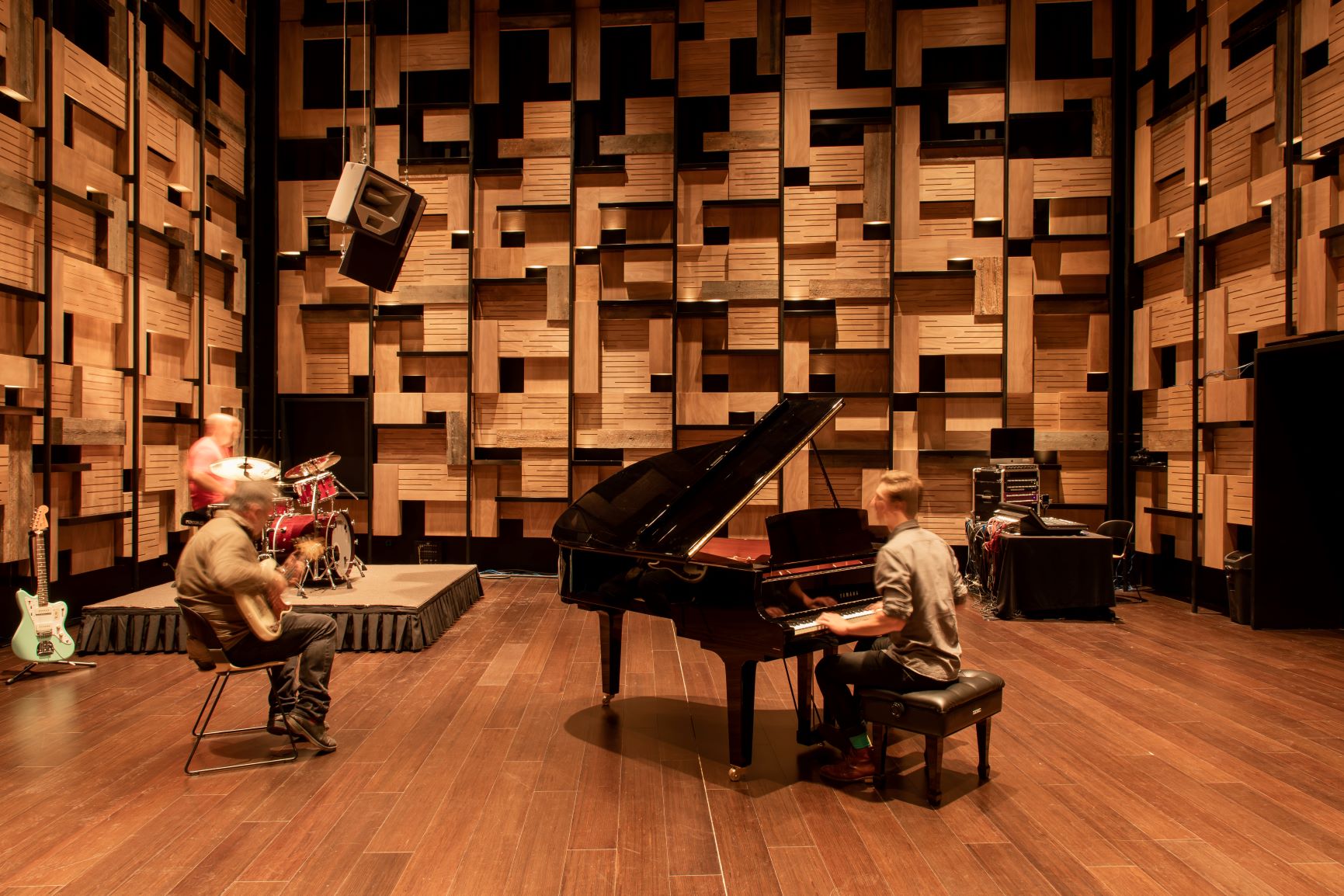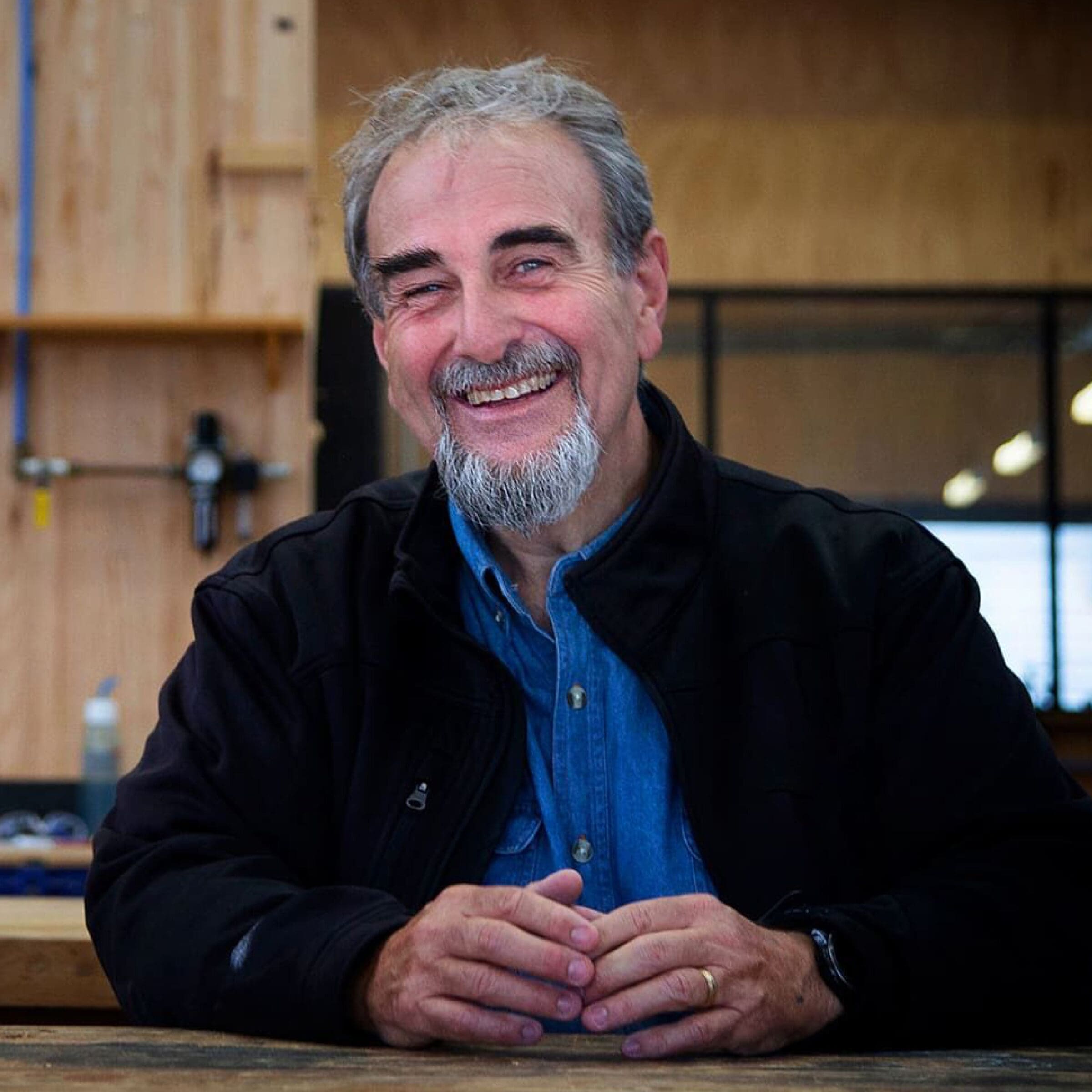The Timber that Made ‘That Couch’
The bespoke ‘Tailored’ Tasmanian Oak couch was designed and made by Simon Ancher Studio. Tasmanian Oak is an ideal timber for furniture making, especially when the design calls for beautiful curves. Why? Its stability is unmatched.
Client Alice Hanson commissioned the couch for her new home that recently featured on Grand Designs Australia. She wanted to showcase what makes Tasmania so special – and Tasmanian Oak certainly fits that brief. It is an iconic Tasmanian timber that has been trusted by furniture makers for generations.
For the couch Alice requested a cocoon or nest-type of object that you would want to curl up in and read by the fire or look out at the amazing view and just be in your thoughts.
Designer Maker Simon Ancher wanted to create a couch that was engaging from all angles and encouraged an excitement or anticipation in using it. And didn’t he nail the brief!
“It needed to be a standalone object, viewed in the round from all angles,” says Anchor. He looked to boat building and barrel-making techniques, such as coppering, for inspiration.
He designed a Tasmanian Oak timber frame with soft rounded corners along its edge and a faceted shape at the rear. The frame provides a sense of enclosure for the cushioned Pelle leather seat, arm and backrests that wrap neatly within its form. Raised on powder-coated steel in textured matte black, the couch appears to almost float above the floor due to the curves and cut-outs in the steel.
“I designed the couch to look like it was steam bent, like two hands cupped together into a cradling, nurturing sanctuary. That’s why the veneer was so good,” says Simon.
He used reclaimed Tasmanian Oak veneer that was twice as thick as the norm. This allowed for the coppering and feathering.
“The Tasmanian Oak veneer was backsawn, which is not normally done, this exposed the beautiful grain, and it was Reclaimed Oak, which is quite a lot darker.”
Simon says its as if the timber veneer was ‘tailored’ to the project.
“There were only 15 leaves of 1.2mm thick veneer x 2.8m long left in the run and I needed 15 leaves at 2.7 in length – so there was no room for error!”
“This was a project that really pushed my hand skills and understanding of geometry,” Simon says.
Simon likes Tasmanian Oak because its a ‘white’ timber.
“What I like about Tasmanian Oak is that it is not too heavily figured or coloured – it’s more muted, so it can sit comfortably with other species or colours and therefore it can fit into a lot more situations.”
“I think that Tasmanian Oak is being looked at more. Its use in more contemporary design and objects is demonstrating that it is on par with other fashionable timber species.”
Tasmanian Oak has wonderful workability and an unrivalled ability to behave as expected – to hold its form due to its stability.
Learn more about Alice Hanson’s Lewisham house.

















